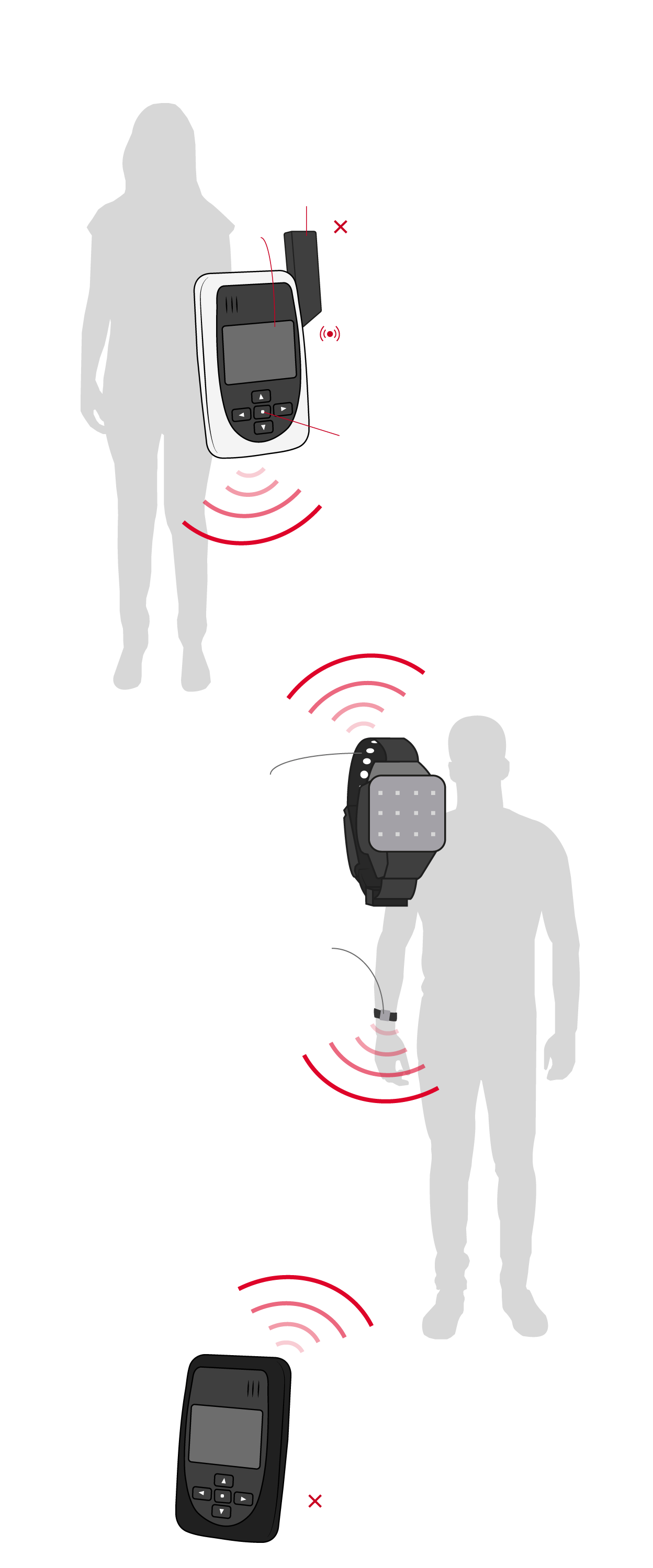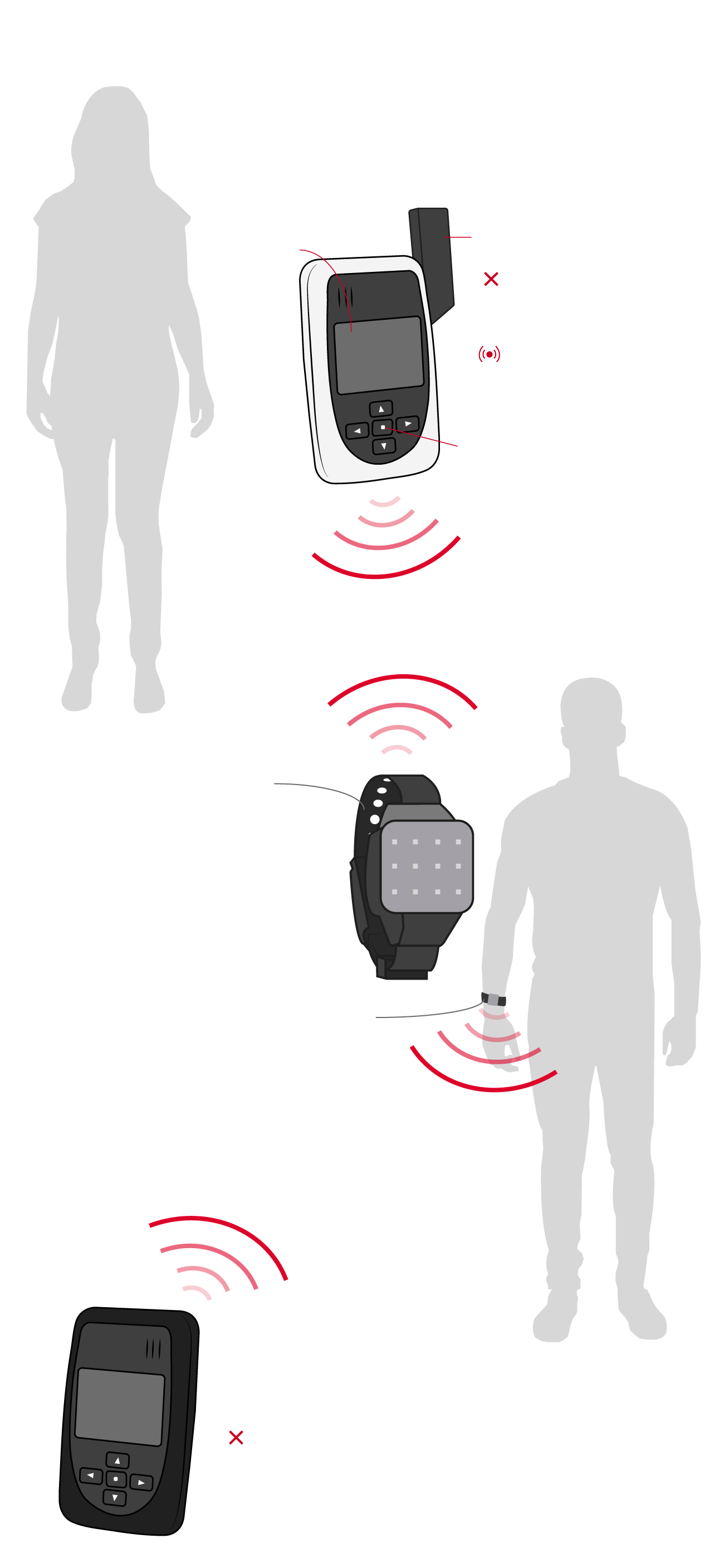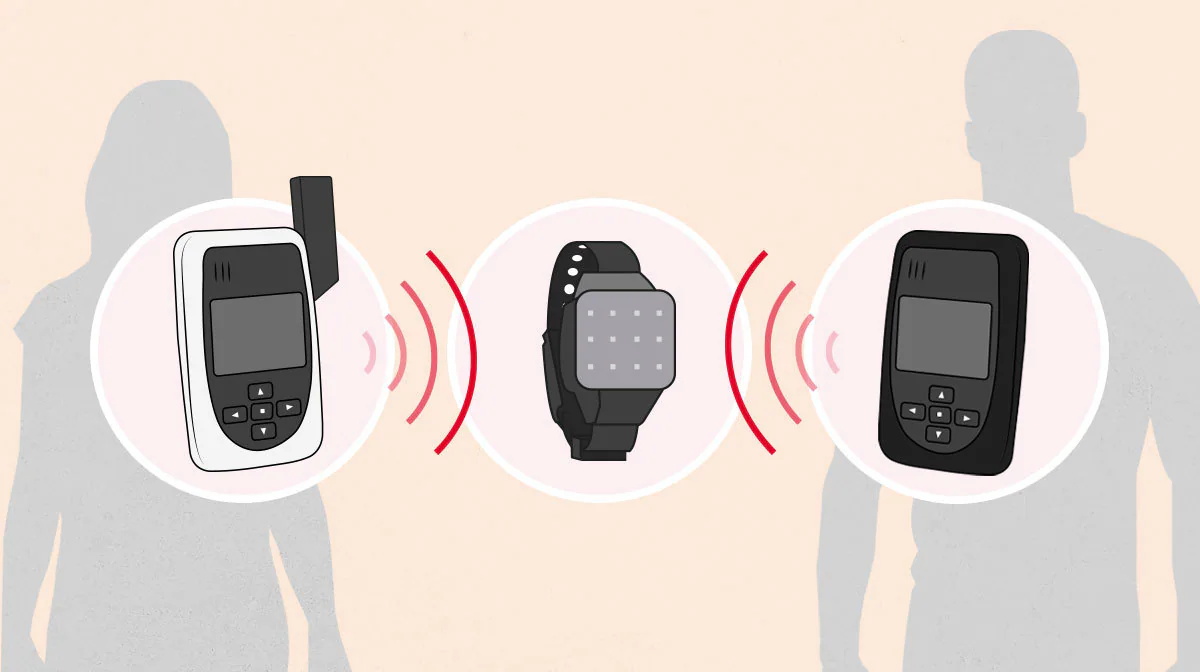3,600 telematic devices operating across the country to comply with gender-based violence precautions use outdated technology, and its third-generation (3G) network is mired in blackout activity that will peak in 2025. According to police sources, the emission power of these devices is similar to that of a mobile phone as they create “shadow areas” without protection.
These technical limitations make it difficult to locate the woman if a convicted and/or convicted assailant violates a judicial restraining order. The reason is that the tracking of these devices depends on the GPS Geopositioning System which works through the satellite network. If this signal fails, a secondary system called GSM is activated, which involves identifying and locating the base station – the antennas distributed by the telephone operator throughout the country – and the device is registered according to its location. In both cases, its performance goes hand in hand with the coverage capability of the terminal.
Most active devices are used by victims with a “medium, high or severe” risk rating in the Home Office’s VioGén system. According to the latest data from the Ministry of Equality, its implementation has increased by 30% in the past year, to 2,774 in April 2022, up from 3,600 last April. Andalusia, 1,300 devices installed for each victim and defendant; Valencian society, 470; Community of Madrid, 345; Canaries, 222; Castilla-La Mancha, with 219, and Galicia, with 203, top the list.
The current telematic monitoring devices “use 3G technology,” according to a file sent to this newspaper by the government representative against gender-based violence, Victoria Rosell, through a query on the Transparency Portal. It is an acronym for third-generation voice and data transmission systems via mobile phones that are not already in use in favor of 4G, 4G+ or 5G.
Monitoring of computer devices
2 track unit
(victim’s device)
Tracking device with 3G GPS technology
screen to receive messages
There is no on or off button to avoid disconnection
Includes tamper sensors, audible and vibration alerts
A panic button that communicates with the control center via voice call
Its external antenna detects the intruder’s transmitter’s radio frequency signal at a range of up to 500 meters.
A radio frequency transmitter
(device of the criminal)
A bracelet that fits the body (preferably wrist or ankle, to make manipulation more difficult)
It has a detection system for communication with the wearer’s body and its possible manipulation
Both emit a radio frequency signal that is received by the 2Track unit Affected Like own the aggressor (You may not be separated from the occupier’s unit by more than a few meters)
2 track unit
(device of the criminal)
A location device with 3G GPS technology and voice and data communication (SMS and GPRS)
There is no on or off button to avoid disconnection

Monitoring of computer devices
2 track unit
(victim’s device)
Tracking device with 3G GPS technology
screen to receive messages
There is no on or off button to avoid disconnection
Includes tamper sensors, audible and vibration alerts
A panic button that communicates with the control center via voice call
Its external antenna detects the intruder’s transmitter’s radio frequency signal at a range of up to 500 meters.
A radio frequency transmitter
(device of the criminal)
A bracelet that fits the body (preferably wrist or ankle, to make manipulation more difficult)
It has a detection system for communication with the wearer’s body and its possible manipulation
Both emit a radio frequency signal that is received by the 2Track unit Affected Like own the aggressor (You may not be separated from the occupier’s unit by more than a few meters)
2 track unit
(device of the criminal)
A location device with 3G GPS technology and voice and data communication (SMS and GPRS)
There is no on or off button to avoid disconnection

Monitoring of computer devices
2 track unit
(victim’s device)
Tracking device with 3G GPS technology
screen to receive messages
There is no on or off button to avoid disconnection
Includes tamper sensors, audible and vibration alerts
A panic button that communicates with the control center via voice call
Its external antenna detects the intruder’s transmitter’s radio frequency signal at a range of up to 500 meters.
A radio frequency transmitter
(device of the criminal)
A bracelet that fits the body (preferably wrist or ankle, to make manipulation more difficult)
It has a detection system for communication with the wearer’s body and its possible manipulation
Both emit a radio frequency signal that is received by the 2Track unit Affected Like own the aggressor (You may not be separated from the occupier’s unit by more than a few meters)
2 track unit
(device of the criminal)
A location device with 3G GPS technology and voice and data communication (SMS and GPRS)
There is no on or off button to avoid disconnection

Monitoring of computer devices
2 track unit
(victim’s device)
Tracking device with 3G GPS technology
There is no on or off button to avoid disconnection
screen to receive messages
Includes tamper sensors, audible and vibration alerts
A panic button that communicates with the control center via voice call
Its external antenna detects the intruder’s transmitter’s radio frequency signal at a range of up to 500 meters.
A radio frequency transmitter
(device of the criminal)
A bracelet that fits the body (preferably wrist or ankle, to make manipulation more difficult)
It has a detection system for communication with the wearer’s body and its possible manipulation
Both emit a radio frequency signal that is received by the 2Track unit Affected Like own the aggressor (You may not be separated from the occupier’s unit by more than a few meters)
2 track unit
(device of the criminal)
A location device with 3G GPS technology and voice and data communication (SMS and GPRS)
There is no on or off button to avoid disconnection
Telefónica, the contract company for the monitoring service of these telematic devices, has already announced through its Movistar brand that it has started shutting down the 3G signal in Spain and that all antennas using this network will be rebuilt by 2025.
This process will gradually reduce the capacity of the 3G network, creating coverage “shadow zones”. Situation explaining the complaints sent by police and civil police unions regarding assistance to victims of gender violence.
“Coverage Comes and Goes”
The reason is the “extremely stressful circumstances” experienced by agents attending a notification, whether the injunction is voluntary or not. According to a spokesperson for the Unified Association of Civil Guards (AUGC), in many cases, the coverage of the woman’s terminal “comes and goes” and does not provide an exact or approximate position, making it difficult to locate and secure the woman.
“It’s obvious, but the advancement of technological means has an impact on the efficiency of the service, the response time. Then it’s not worth complaining,” says a policeman in question who works in a provincial capital and attends half a dozen notices every week. Responsible for alerting and controlling alarms, it is linked to police and judicial databases and operates 24 hours a day, 365 days a year.
In November 2008, the Socialist government adopted an agreement that entrusted the ministries of equality, justice and the interior to implement proximity detection devices for perpetrators of gender-based violence. The contract was tendered half a year later. In these 14 years, more than 13,000 appliances have been installed. Each is composed of three components: two by the defendant/offender, the aforementioned mobile terminal in the form of a control bracelet with a 3G-GPS network and radio frequency transmitter, and one by the victim, the first. The unit and it additionally has an external antenna that detects the signal from your ex-partner’s bracelet.
“Advancement in technological means affects service efficiency, response time. So there is no point in complaining,” he said.
A national police agency assigned to citizen protection
In October 2021, the Secretary of State for Equality and Gender-Based Violence awarded Telefonica a comprehensive monitoring service for these telematic media. The maximum amount is 36.7 million and for two years and four months (until February 2024), the contractor is responsible for the supply, installation, de-installation and maintenance service of the equipment; Computer Implementation and Operational Service, Telecommunication and Operational Network.
This last task includes the operation of the control center and the recording of identified quality problems. This parameter is developed by studying technical information, complaints of users and security forces and organizations and satisfaction of victims.
The 36.7 million contract with Telefónica is financed in a mixed way. Budgets of government representatives against gender-based violence and the Recovery, Transformation and Resilience Program were charged. In the plan, an item is planned to modernize the anti-abuse bracelets and “provide 4G or 5G technology to improve their coverage in the national territory and improve the efficiency of data transmission to the control center,” they admit from Equality. In addition to reducing the size of devices and improving functionality, the need for improvements related to the now-condemned “indoor coverage” has been recognized.
Telefonica declined to respond to a questionnaire sent by this newspaper to implement existing improvements in the market within the terms of the agreement. To find out the problems related to maintenance of this equipment with the dying technology, the alleged quality problems of the equipment, its cost per unit or when the replacement plan will be undertaken. “We do not provide information about our customers,” a company spokesperson explains succinctly.

